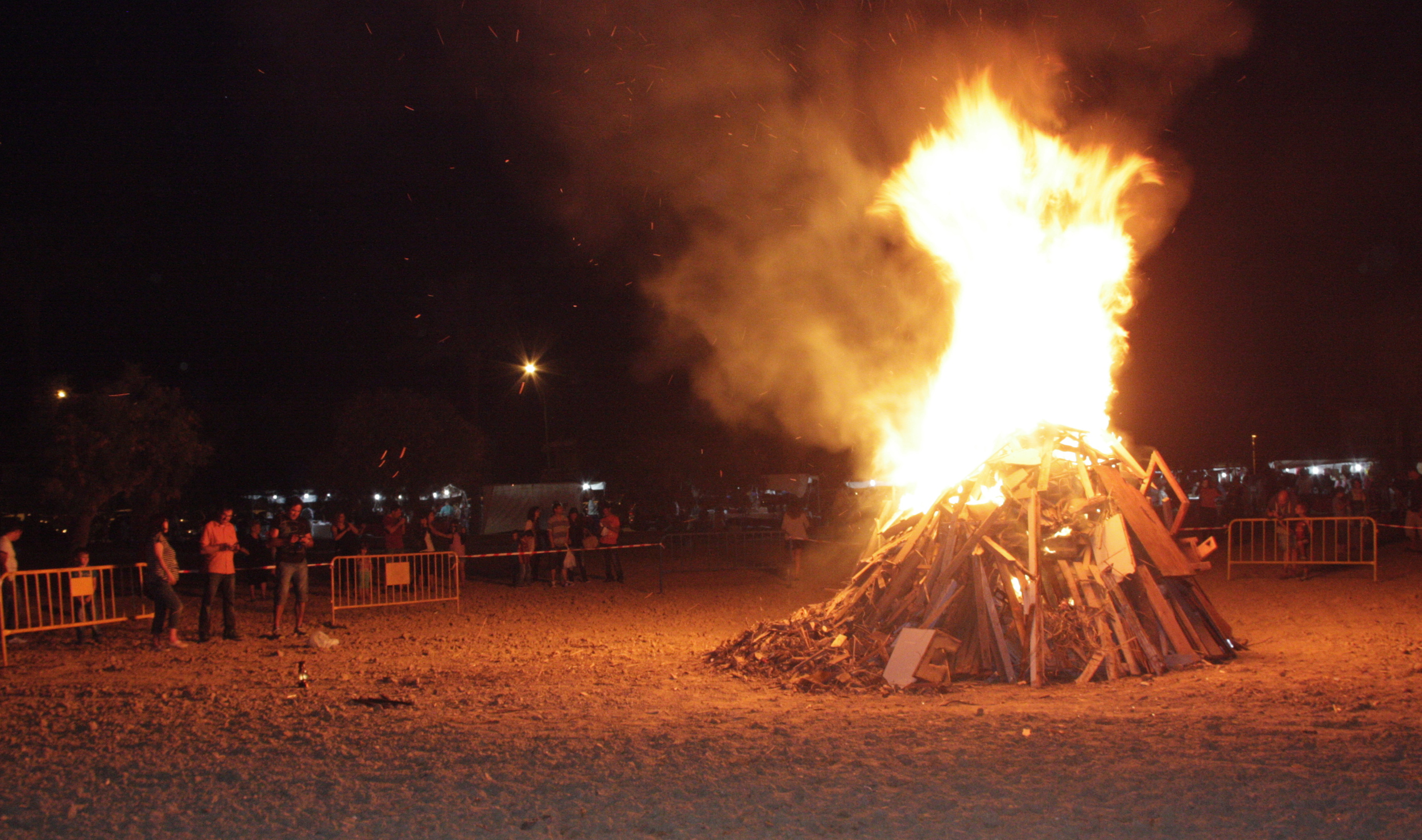Midsummer's Eve in Catalonia: one of the most magical nights of the year… but caution!
Bonfires and firecrackers are the most characteristic elements of the June 23 celebration, in which the Catalan language also plays an important role

Firecrackers, bonfires, packed beaches, a torch relay from the mountains to the cities, and happy children. These are only some of the elements converging in one of the most magical and brightest nights of the year in Catalonia, Midsummer's Eve (also known as Saint John's Eve, June 23). Dating back some hundreds of years as part of the summer solstice celebration, tradition has it that fire purifies and dispels the imaginary beings that wander around the country during the night. And despite having entered into the 21st century and the information society, Catalonia still celebrates this ancient pagan belief. In style.
On average, every family in the country will have spent €30 each on firecrackers during the weeks leading up to Midsummer's Eve. Children and adults will set them off in streets, squares, fields or even at home. For several hours, non-stop mini-explosions will be the melody of the night throughout the country to the joy of most children… and to the horror of dogs and sensitive people.
Firecrackers give over to bonfires in some towns and beaches, which are invaded by thousands of young people willing to spend the whole night out, leaving clubs aside for a night. As dawn breaks, some of them will take one of their first swims of the season in the sea. The action, though, also takes places in the Catalan Pyrenees. Many towns host the so-called ‘falles’ on the 23rd of June or the weeks around this night. It is a UNESCO heritage-awarded tradition in which hundreds of people descend mountains bearing heavy torches until they reach the closest village, where more people and parties await them.
The key element of Midsummer's Eve is fire, which makes for a special night… but also a dangerous one. Firecracker injuries are common and fires are inevitable every year. The date comes this year in the middle of a heatwave, so authorities are on high alert and are running an awareness campaign. Firefighters will get no sleep tonight, as they will have to be ready to prevent wildfires. The first serious fire in Catalonia this season occurred yesterday in the Bages region, where 80 hectares burned down.
The Midsummer celebration, though, is not only about firecrackers. The date is an important one in terms of Catalan language and territorial cohesion, as each year hundreds of torches are simultaneously paraded through the country between June 22 and June 23 symbolizing the vitality of the Catalan language. The tradition started at the end of the Franco era when this language was harshly oppressed by Spanish authorities. The first torch is ignited in Canigó, an iconic mountain for Catalan identity in the Catalan-speaking area of southern France, and is shared with torch bearers in hundreds of towns in the country and also Valencia, where Catalan is also spoken. In fact, Midsummer's Eve is celebrated in most Catalan-speaking areas, including the Balearic Islands.
In addition, as on all special holidays in Catalonia, food also has a role to play. Different kinds of coca de Sant Joan (a flat sweet pastry, whose most famous variety features candied fruit) are unlikely to be missing from any household. Their popularity is so widespread that around 1.7 million pieces of this handmade dessert will be sold this year, according to a Barcelona-area bakers guild. The top sellers are the traditional ones, made of brioche and candied fruit, or pieces of crackling, but there are also new varieties, ones stuffed with cream, chocolate cream, or truffle.
The whole celebration is good news for most children, not only for the firecrackers and the cakes, but because it marks the end of the school year. School always finishes by June 22 –this year it was one day earlier–, and the long-awaited 80-something-day summer holiday begins. September 12, when it all starts again, is still very far away. For most parents this is not such good news, as it is never very easy to figure out how to keep the kids occupied for such a long period. Still, their holidays are also round the corner so Midsummer's Eve is usually welcomed by everyone.